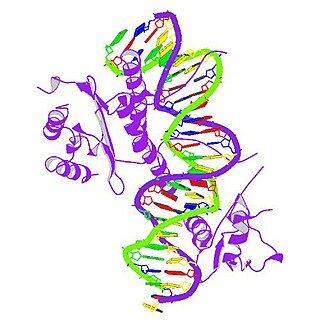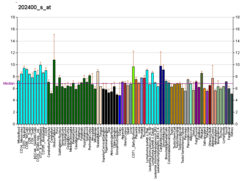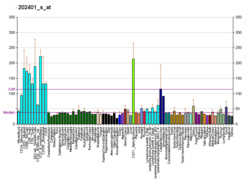Top Qs
Timeline
Chat
Perspective
Serum response factor
Mammalian protein found in Homo sapiens From Wikipedia, the free encyclopedia
Remove ads
Serum response factor, also known as SRF, is a transcription factor protein.[5]
Remove ads
Function
Serum response factor is a member of the MADS (MCM1, Agamous, Deficiens, and SRF) box superfamily of transcription factors.[6] This protein binds to the serum response element (SRE) in the promoter region of target genes. This protein regulates the activity of many immediate early genes, for example c-fos, and thereby participates in cell cycle regulation, apoptosis, cell growth, and cell differentiation. This gene is the downstream target of many pathways; for example, the mitogen-activated protein kinase pathway (MAPK) that acts through the ternary complex factors (TCFs).[7][8]
SRF is important during the development of the embryo, as it has been linked to the formation of mesoderm.[9][10] In the fully developed mammal, SRF is crucial for the growth of skeletal muscle.[11] Interaction of SRF with other proteins, such as steroid hormone receptors, may contribute to regulation of muscle growth by steroids.[12] Interaction of SRF with other proteins such as myocardin or Elk-1 may enhance or suppress expression of genes important for growth of vascular smooth muscle.
Remove ads
Clinical significance
Lack of skin SRF is associated with psoriasis and other skin diseases.[13]
Interactions
Serum response factor has been shown to interact with:
See also
References
Further reading
External links
Wikiwand - on
Seamless Wikipedia browsing. On steroids.
Remove ads







